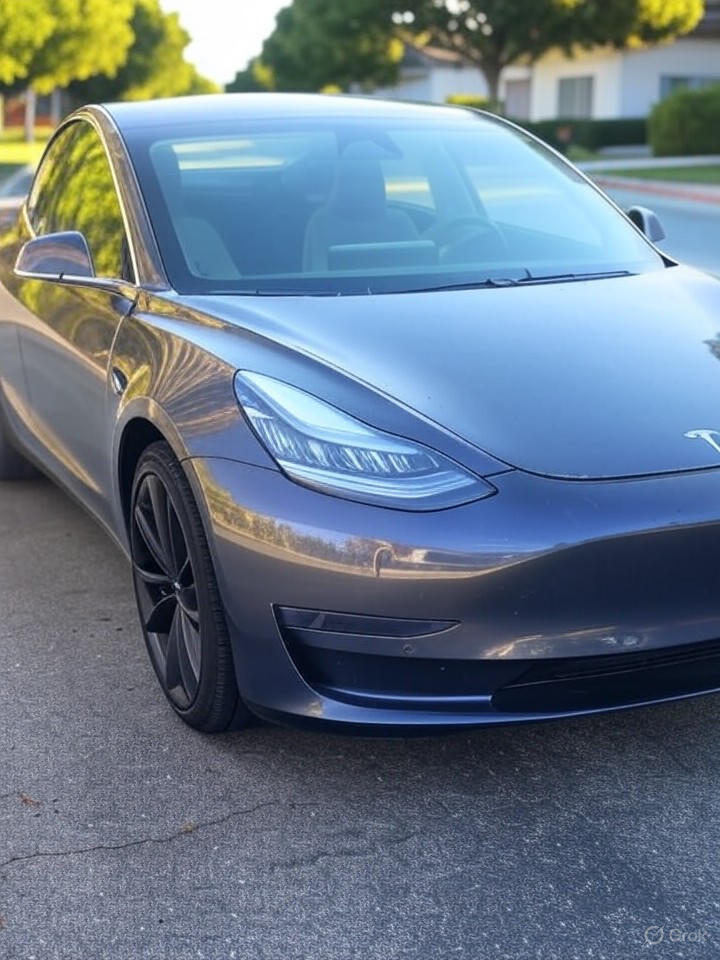In the ever-evolving electric vehicle sector, used Tesla prices have hit a historic low, dipping below the average for the broader secondhand car market for the first time. According to recent data from iSeeCars, the average price of a used Tesla now stands at $32,181, compared with $33,986 for all used vehicles—a stark reversal from the premium valuations Teslas once commanded. This shift, observed in July 2025, underscores a softening consumer sentiment toward the brand amid broader economic pressures and company-specific challenges.
Analysts point to a confluence of factors driving this decline. Oversupply from Tesla’s aggressive production ramps and frequent price cuts on new models have flooded the market, eroding resale values. For instance, the Model 3 and Model Y, Tesla’s bestsellers, have seen used prices plummet by as much as 17% in the first half of 2025, as reported in an analysis by Hungarian platform hasznaltauto.hu featured in the Budapest Business Journal.
Plunging Values Amid Rising Vandalism and Political Backlash
This price erosion coincides with reports of increased harassment against Tesla owners and vandalism at showrooms, potentially linked to CEO Elon Musk’s high-profile political involvements. A March 2025 article from CNN Business highlighted how Musk’s controversial role in U.S. government affairs has contributed to declining interest in used Teslas, with resale values plunging as a result. Sentiment on social platforms like X reflects this unease, with users noting a dramatic drop in listings for models like the Model Y, signaling weakened demand.
Competition from rivals such as Ford and General Motors has intensified, offering more affordable electric options that undercut Tesla’s once-dominant position. Data from Electrek in March 2025 showed Tesla’s used prices falling at three times the rate of the overall market, a trend that has persisted into summer.
Oversupply and Sales Slumps Exacerbate the Trend
Tesla’s first-quarter 2025 sales dropped 13% to their lowest since 2022, as charted by Visual Capitalist, further pressuring the used segment through increased inventory turnover. Industry insiders note that fleet sales to rental companies like Hertz have led to a surge of low-mileage used Teslas hitting auctions, depressing prices. A May 2025 report from EVXL.co attributed this to a “turbulent shift” driven by oversupply and shifting buyer preferences.
Despite these headwinds, some optimism persists. Tesla’s pivot toward autonomy and robotaxi services could bolster long-term valuations, with stock targets for 2025 ranging from $275 to $400, according to WebProNews. However, volatility remains a concern, with potential swings below $200 or above $300 amid mixed analyst forecasts.
Broader Implications for EV Adoption and Market Dynamics
For consumers, this means unprecedented deals—used Model 3s now average under $30,000 in some regions, making electric vehicles more accessible. Yet, for Tesla, the trend signals a need to rebuild brand loyalty. As New York Post reported on August 8, 2025, this marks the first time used Teslas have averaged less than the overall secondhand market, a milestone reflecting softened sentiment toward the carmaker.
Looking ahead, experts predict continued pressure unless Tesla innovates beyond current models. A June 2025 analysis from CarPro noted that while general used car values rose for three consecutive months, Tesla’s bucked the trend downward. This divergence could reshape EV resale norms, pushing competitors to adapt pricing strategies.
Strategic Shifts and Future Projections
Tesla’s response has included software updates and incentives, but insiders argue deeper reforms are needed to counter negative perceptions. Posts on X from users tracking market data echo this, with observations of record-low averages like $30,494 in late 2024 extending into 2025. If sentiment rebounds, perhaps through successful robotaxi launches, resale values might stabilize; otherwise, the slide could accelerate.
Ultimately, this moment tests Tesla’s resilience in a maturing EV market. With global adoption accelerating, the company’s ability to navigate these challenges will determine its trajectory through the decade.




 WebProNews is an iEntry Publication
WebProNews is an iEntry Publication